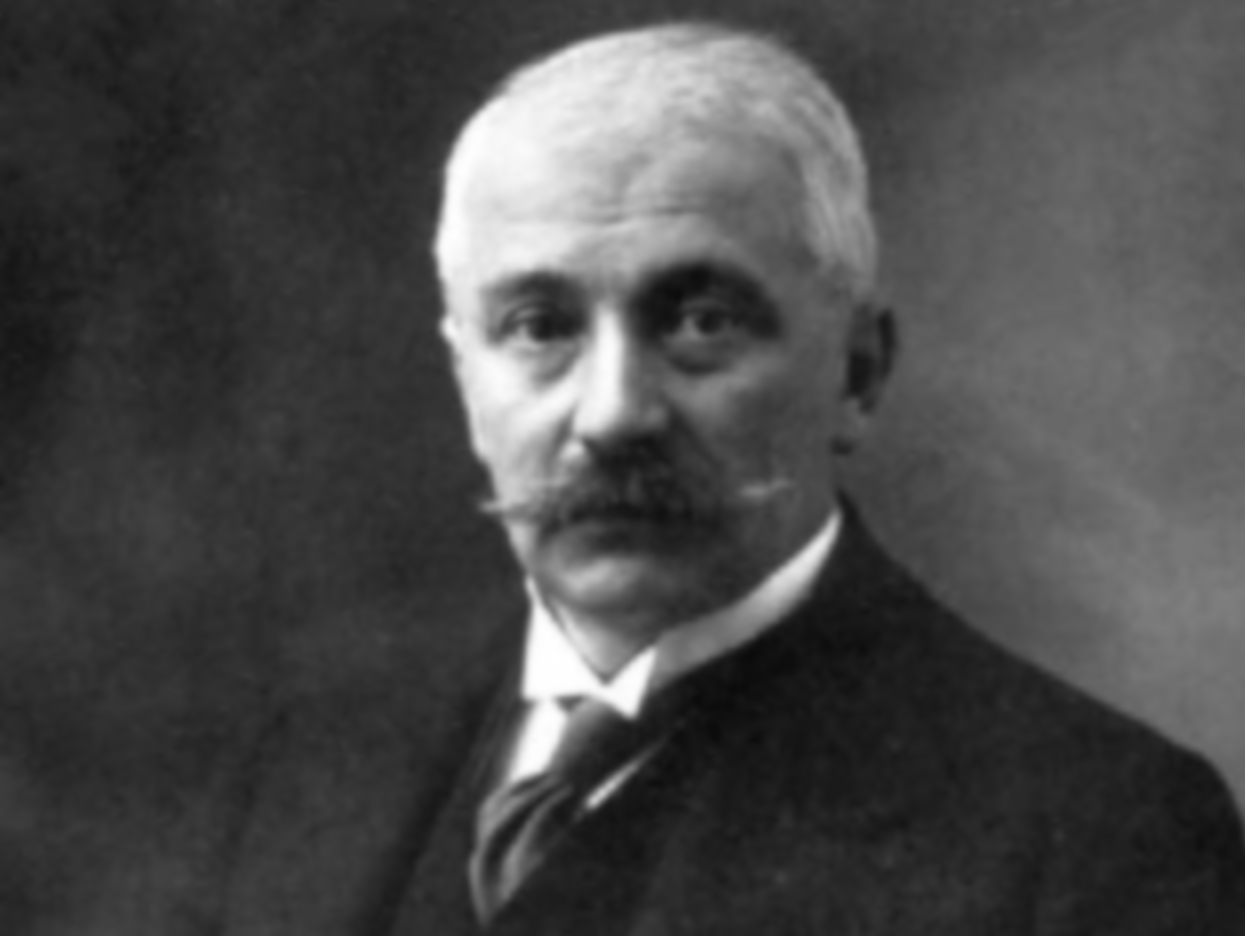Giacomo Luigi Ciamician was born on August 27, 1857, in Trieste, Italy (then part of the Austrian Empire). He studied chemistry at the University of Vienna, Austria, and received his Ph.D. from the University of Gießen, Germany, under the supervision of Hugo Weidel in 1880. He then joined the University of Rome, Italy, as an Assistant and later became Lecturer there. In 1887, he moved to the University of Padua, Italy, and in 1889, to the University of Bologna, Italy, as Professor for General and Biological Chemistry. Giacomo Ciamician died in Bologna on January 2, 1922.
Ciamician is known as a pioneer of photochemistry and green chemistry. As Vincenzo Balzani, Professor at the “Giacomo Ciamician” Department of Chemistry at the University of Bologna, puts it, ” […] in our department there was a long tradition in photochemistry, going back to the beginning of the last century when Giacomo Ciamician used to perform photochemical experiments on the roof of the building using the sun as a light source.” [1].
Ciamician was an early proponent of the move away from fossil fuels and towards the use of renewable solar energy. In 1912, he published a paper in Science [2] in which he stated that “coal is not inexhaustible” and proposed a vision of the future in which “photochemical processes that hitherto have been the guarded secret of the plants […] will have been mastered by human industry.”
Ciamician also worked on the chemistry of pyrrole and other heterocycles. The Ciamician–Dennstedt rearrangement, a reaction that transforms pyrrole into a pyridine derivative, is named after him and his German colleague Max Dennstedt [3]. The Ciamician–Plancher rearrangement, named after Ciamician and fellow Italian Giuseppe Plancher, is a reaction in which a substituted indoline-3-ol is converted to an indole [4]. The eponymous Ciamician photodisproportionation is a rearrangement of 2-nitrobenzaldehyde to 2-nitrosobenzoic acid [5].
Giacomo Ciamician is the answer to Guess the Chemist (121).
References
- [1] Think What Nobody Has Thought,
Martin Preuss
ChemistryViews 2014.
https://doi.org/10.1002/chemv.201400067 - [2] The Photochemistry of the Future,
Giacomo Ciamician,
Science 1912, 36, 385–394.
https://doi.org/10.1126/science.36.926.385 - [3] Ueber die Einwirkung des Chloroforms auf die Kaliumverbindung Pyrrols (in German),
Giacomo Ciamician, Max Dennstedt,
Chem. Ber. 1881, 14, 1153–1163.
https://doi.org/10.1002/cber.188101401240 - [4] Ueber die Einwirkung von Jodäthyl auf α-Methylindol (Methylketol) (in German),
Giacomo Ciamician, Giuseppe Plancher,
Chem. Ber. 1896, 29, 2475–2482.
https://doi.org/10.1002/cber.18960290318 - [5] Chemische Lichtwirkungen (in German),
Giacomo Ciamician, Paolo Silber,
Chem. Ber. 1901, 34, 2040–2046.
https://doi.org/10.1002/cber.190103402118
Sources
- Obituary notices,
Raffaello Nasini, Reginald Brown, Alfred Rée, W. Lash Miller, J. T. Hewitt, H. M. Dawson, Edmund Knecht,
J. Chem. Soc. 1926, 129, 993–1050.
https://doi.org/10.1039/JR9262900993
Also of Interest
- 40 Years of the Giacomo Ciamician Medal,
ChemistryViews 2020.
Named after a visionary Italian chemist and awarded annually by the Società Chimica Italiana (SCI) to outstanding early career researchers - Special Collection of articles following Giacomo Ciamician’s science and philosophy
articles from Angewandte Chemie, ChemSusChem, and ChemPhotoChem



